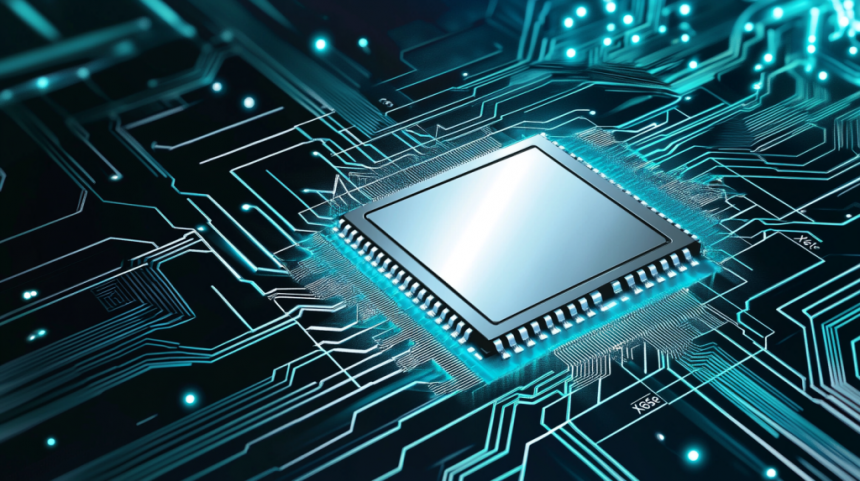SambaNova Systems and Gradio Revolutionize AI Access with New Integration
In an exciting development for developers and businesses alike, SambaNova Systems has partnered with Gradio to unveil a cutting-edge integration that simplifies access to high-performance AI inference capabilities. The new collaboration aims to streamline the process of harnessing advanced AI technologies, making them more accessible and user-friendly for developers coding in various environments.
Ahsen Khaliq, the Machine Learning Growth Lead at Gradio, expressed enthusiasm about this integration, stating, “This integration makes it easy for developers to copy code from the SambaNova playground and get a Gradio web app running in minutes with just a few lines of code.” He added that by leveraging SambaNova Cloud, users can experience super-fast inference, significantly enhancing the usability for both developers and end-users.
The SambaNova-Gradio partnership allows developers to utilize the gr.load() function to build web applications powered by SambaNova’s state-of-the-art AI models. This feature facilitates rapid creation of chat interfaces linked to SambaNova’s advanced technologies, simplifying the interaction with powerful AI systems.
Code snippet showcasing the effortless integration of SambaNova’s AI models with Gradio’s user interface highlights the partnership’s commitment to enhancing AI accessibility for developers. (Credit: SambaNova Systems)
Innovating AI Processing: Beyond Traditional GPUs
SambaNova Systems, a Silicon Valley startup supported by industry giants like SoftBank and BlackRock, is shaking up the AI hardware landscape with its innovative dataflow architecture chips. These chips are engineered to outperform conventional GPUs, and SambaNova is making bold claims about offering “the world’s fastest AI inference service.”
The platform’s capabilities include running Meta’s Llama 3.1 405B model at an impressive speed of 132 tokens per second at full precision. Such speeds are crucial for enterprises aiming to scale their AI operations effectively.
As competition in the AI infrastructure sector intensifies, companies like SambaNova, Groq, and Cerebras are stepping up to challenge the longstanding dominance of Nvidia in the AI chip market. This new wave of startups is focusing on inference technology, which is poised to expand into a market that surpasses model training in demand.

SambaNova’s AI chips demonstrate 3-5 times greater energy efficiency compared to Nvidia’s H100 GPU when processing large language models, underlining the performance edge offered by these new technologies. (Credit: SambaNova Systems)
Simplifying AI Development for Developers
The integration of SambaNova and Gradio opens up new pathways for developers who can now experiment with high-performance AI without extensive technical hurdles. With SambaNova’s free tier, developers can swiftly wrap supported models into web applications and host them efficiently, aligning with contemporary trends that prioritize streamlined AI application development.
This integration predominantly facilitates Meta’s Llama 3.1 family of models, including its 405B parameter version. SambaNova asserts that it is uniquely capable of running this model at high speeds and full 16-bit precision, a critical factor for applications requiring high accuracy, particularly in sectors like healthcare and finance.
Addressing the Hidden Costs of AI
Despite the promising advancements offered by the SambaNova-Gradio integration, there are pertinent concerns regarding the sustainable evolution of AI technologies. The heated competition for faster processing speeds raises essential questions about energy consumption, scalability, and environmental impact.
While metrics like tokens processed per second are vital, enterprises must also consider the broader implications of AI deployment. The long-term viability of these technologies will depend on balancing performance with sustainability—factoring in energy requirements and cooling demands, alongside the total cost of ownership.
Furthermore, as SambaNova and its competitors offer robust hardware solutions, the prevailing Nvidia CUDA ecosystem—known for its extensive libraries and tools familiar to many AI developers—poses a significant influence on adoption rates.
A Collaborative Future in AI Innovation
As the AI infrastructure landscape evolves, collaborations like the SambaNova-Gradio integration are expected to become more prevalent, fostering innovation and competition in an arena poised for transformative possibilities across various industries. The real challenge lies in translating these technological advancements into practical applications that deliver accessible, efficient, and powerful AI solutions for everyone.



